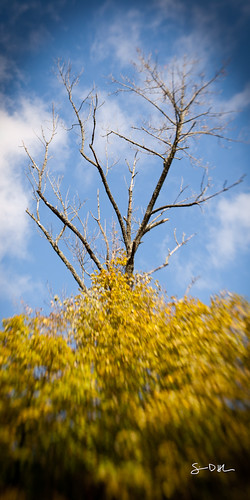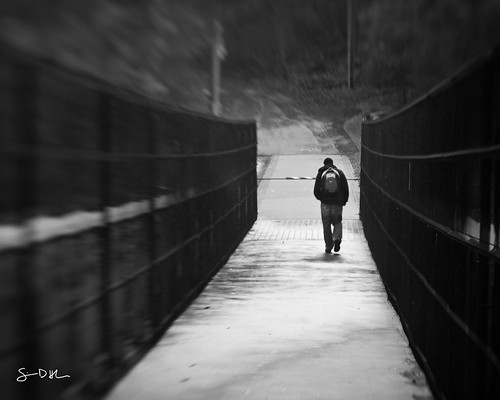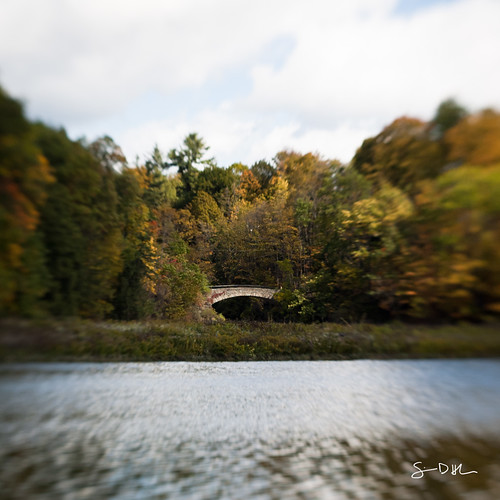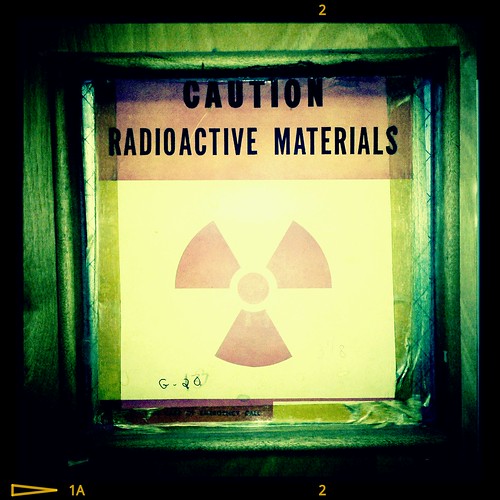skip to main |
skip to sidebar

Hey everyone, just wanted to let you know that I wrote a review of my experience with Lens Rentals over at Shutter Photo. If you're interested, the review can be found here.
I've already plugged Shutter Photo here, but if you're still not a reader I suggest subscribing to their feed. Travis does a great job balancing out gear, technique and inspiration, and I always enjoy reading his latest posts.
Have a great weekend, everyone.
~S
[title of blog] on flickr

© 2010 Simon Hucko. Please do not use without permission
I was somehow lucky enough to be selected for Google's Chrome OS pilot program. Since this is like winning the geek lottery, I thought I would share my experience here on the blog for anyone who's interested. I'll try to tie it into photography as I go, but there will be plenty of non-photo geeking out, so if that's not your cup of tea feel free to skip through these.
I applied for the pilot program during Google's announcement last Tuesday (along with everyone else in the world). Friday night I came home from work and found an anonymous package on our porch. I opened it up and found my sleek black Cr-48 notebook complete with Chrome OS, Google's new operating system. After a bit of jumping up and down like a little schoolgirl (not my finest moment...) I popped the battery in and began using it.
The beauty of Chrome OS is that if you're a Googlephile like me, most of the setup is already done. It really works just like the demo - open the machine, connect to the internet, log into your Google account, take a photo for your user account (optional), and less than a minute later you're up and browsing. I use Chrome as my regular browser, and have my bookmarks and everything synced, so all that was ported to the computer within minutes of logging on. (Yeah, minutes. I'm surprised it didn't happen faster, but once it did it's been pretty seamless. Might have been a software update thing.) The experience is pretty much exactly like using Chrome on any other machine, which is the point I suppose. Things seemed a bit laggy and slow at the beginning, but after a software update, a bit of use and a restart or two it's humming along nicely.
An all-web experience means that the machine is really only as good as its internet connection. So far I've only had it on the wifi at home, so it's been cranking along. The Cr-48 has a built in 3G receiver and 100mb/month free data from Verizon (along with some paid options for more data), but I haven't tried that yet. At the moment there really aren't any offline options, but I know that's something that Google is working on and trying to push developers to do as well. The Chrome "web store" (which currently is more of a "link store") should help with this.
As far as photography is concerned, the machine is surprisingly usable, as long as you shoot jpeg and have access to wifi. You can connect a card reader or put an SD card into the built in slot, upload your images to a web photo editor like Picnic or Aviary, then post them to Flickr, Twitter, Facebook, Picasa, etc. Where it starts to break down is if you have a lot of images that you want to offload and store, like when you're travelling. At the moment, Chrome OS has no real file browser to speak of. You can get into a file structure when uploading images to the web, but there's no way to take images off a card and store them locally on the SSD (without going through some complicated ritual like uploading them to the web then downloading them again). I know that the point of Chrome OS is to do everything web-based, but it's a real pain to upload *every* photo to a web editor just to see if it's worth keeping. And, if you shoot raw, your only real option is to use a service like dropbox or e-mail the images to yourself so that you can open them on your photo editing computer back home. Google did say during their announcement that they know people want to connect things like cameras to their machine, so I'm hoping that means a Chrome OS version of Picasa is on its way that will let you manage photos locally and sync them to your online Picasa account. Picasa has some basic raw compatibility, too, so that would be a great solution and make it infinitely more usable as a backup when travelling. This is, of course, just speculation on my part, but if they're looking to target the consumer market at all that would be a highly desirable feature.

© 2010 Simon Hucko. Please do not use without permission
Just to be clear, the Cr-48 is bare bones demo hardware. It's merely a vehicle to deliver Chrome OS. Google is giving out 60,000 for free, so they're not going to be putting top-of-the-line hardware into it (see the specs here). It will never be for sale, except maybe on Ebay. The notebook isn't what they want us testing, the operating system is.
That having been said, and because I know people are curious, the Cr-48 is a pretty nice machine. It's sort of like a spy laptop - the all-matte-black finish and lack of any logos or stickers complements a nice clean design and makes me want to wear a tux and drink a dry martini (shaken, not stirred). It's not ultra-thin or super light (just shy of 4 pounds), but it's small enough to easily slap closed and carry with you anywhere. Boot-up time is measured in seconds, and if you just put it to sleep by closing the lid it resumes instantly (meaning you can close it, carry it, open it, and be right back where you were with no waiting). Battery life seems pretty good - I haven't pushed it to the advertised 8 hours of use, 8 days of standby, but it seems like it would be pretty close to that. The full sized keyboard is quiet and nice to type on (feels a lot like an Apple keyboard, actually). The trackpad is large, and works well to mouse around the screen. I'm a bit of a lazy typer, though, so I find myself bumping it with my palms sometimes, sending me to another part of the screen. Scrolling is done with two fingers, and is a bit rough (it'll randomly jump around, causing me to blow by whatever I was scrolling to). Call me old-fashioned, but I like using the edge of the pad to scroll. There's no horizontal scrolling yet, either, which is a bit of a pain. But, multi-touch support is good, and hopefully my difficulties are just hardware related. It's a bit underpowered when it comes to multi-media. Youtube videos and flash games seemed to run just fine, but I've noticed some issues with video from other sites (Vimeo especially). This can probably be helped with better hardware acceleration support, but will be a limiting factor on this device. I expect the commercial products coming out next year to handle this better.
As it stands right now, a Chrome OS notebook is definitely a second machine. You're still going to want something running a more robust operating system for things like photo/video editing and storage, gaming, and other stand alone apps that you use. However, it's a great solution for a second machine, especially with multiple users. My wife and I each have an account set up on it, and we just leave it on the coffee table. Pop it open for some browsing and e-mail, pop it closed and set it back down until you need it again. Sure, we each have Android phones, but it's so much nicer to work on a bigger screen with a real keyboard. I also see this as a great travel computer. Again, it's a nice step up from the smartphone in terms of usability, and the built in 3G can be a nice feature on the road. It also has great battery life, which means you can bring it for a few days and not worry about the charger (as long as you don't plan on using it heavily). Once the photo thing gets worked out a bit better this would be an excellent backup solution for photographers who are travelling - use the laptop as a local backup and put the keepers up on the cloud to make sure they don't get lost.
Since Chrome OS is still in early beta, I look forward to growing with it and seeing what it becomes. As it stands, there's a lot of potential there, and with the right set of software and features this could be an "only" machine for some people (think about your parents or grandparents who don't do much more than check e-mail and look at your Facebook photos). I'll post updates as things change, especially as some of the hybrid web/offline applications become available. If you have any questions, feel free to ask. I'll answer as best I can. I'm certainly no expert, but I'm happy to share my impressions and opinions.
For even more info, check out the nice in-depth review over at Engadget
~S
[title of blog] on flickr
I had the opportunity to make a few photo-related purchases for my birthday recently. Something that I've had my eye on for a while is a Lensbaby. Rather than drop $200+ on one of the new ones that I may end up not liking and never using, I opted for a used copy of the last generation of Lensbaby (Lensbaby 2.0). It's basically a Lensbaby Muse with a double glass optic built in, which I figured was a good (and inexpensive) way to get started with the whole Lensbaby thing.
First off, I will say there is a bit of a learning curve. From a technical standpoint, all Lensbabies are manual exposure only, so if you're not comfortable with that you may want to steer clear (the point is to be inspired, not frustrated). Focusing accurately can also be a little tough, and I wound up shooting multiples of most subjects until I got what I was after (image review is helpful for this). From a creative standpoint, there are certain shots and effects that work better than others with this lens, so it takes a bit to get a handle on how to best use it. Of course, there's no *wrong* way to use it (that's kinda the point), but certain looks were more appealing to me than others.
Rather than give a technical review, I'm going to go through a series of shots I took showing the different looks I was able to get from the lens, and you can draw your own conclusions from that. I think that's more meaningful, anyway.
The classic Lensbaby look:

Focus in one part of the frame, everything else is blurring away from it. Because the blur is directional it takes on more of a zoom quality than an out of focus quality. This can be very effective in putting the emphasis on your subject. It also gets pretty old, pretty quickly (in my opinion, anyway), so I started looking for other ways to use the lens.
Tilt-Shift:

A Lensbaby is a pseudo-tilt/shift lens, but the field curvature of the optics messes with that and gives you a round sweet spot instead of a plane of focus. However, judicious framing and cropping can give you that tilt-shift look at the expense of some pixels. This is something I have to explore more.
Shallow Depth of Field:

Just glancing at this photo, it looks like a standard shallow depth of field image. Closer inspection of what is and isn't in focus reveals that there is indeed some Lensbaberie going on, but it's a different feel from the standard Lensbaby look. This is entirely composition and subject dependent - you need to find the right situation to make this work.
Lomo:

This is the look I see myself using most often - a reasonably sharp center blurring away at the edges. The square crop and vignette complete the illusion, and bingo bango - digital Holga. Seems to work best with mostly flat subjects at far distances.
Portrait:

This lens has some good potential as a portrait lens. It certainly puts the focus on your subject's face, and leads to a nice blur in the rest of the photo. I don't do a lot of portrait shots, but I'll have to play with this more. Maybe I'll do a family portrait series over the holidays with it. (Maybe.)
Overall I'm pretty happy with my purchase. Like any specialty lens, it's not something I'll use every day, but it's small and light enough to have earned a permanent spot in my bag. I think it will be a great cure for the blahs that settle in from time to time, and just might save my sanity this winter when the world gets gray and ugly. It also will be fun to pull out for some "different" shots at things like weddings, or on vacation at those touresty areas. And if nothing else, it's a good talking piece with other photographers.
~S
[title of blog] on flickr

Since I'm reading through it for the second time, I figured I would write a little review about "Examples: The making of 40 photographs" by Ansel Adams. (Amazon). Ansel Adams is probably the most well-known American photographer, and is most famous for his stunning black and white images of Yosemite (and black and white landscapes in general). If you aren't aware of his work, I highly recommend checking him out (wikipedia, Ansel Adams gallery).
The reason that I love "Examples" so much is that it's almost like having a conversation with Adams while flipping through his portfolio. Each photo is printed and then followed by 2-3 pages of discussion by Adams about the image. He includes as much as the technical information as he can remember (camera, lens, filter, film, exposure, etc), but also goes beyond the "how" into the "why" - why he was motivated to take this image, what the circumstances surrounding it were, how his feelings about the image have changed over time. He also randomly includes his thoughts about the art and craft of photography (at one point he even mentions how he is excited for the development of digital image capture). While the technical information is interesting to me, it's these little nuggets that really make the book a must-read.
Best of all, it's not that expensive to buy (currently $26.39 on Amazon). It would cost you more to buy postcards of the 40 photos in the book. If nothing else, this would be a good one to add to your holiday wishlist.
~S
[title of blog] on flickr

© 2010 Simon Hucko
What? A phone review? Sorry everyone, just got a new toy and I felt like sharing my thoughts about it (especially as it applies to being a photographer). If that's not your cup of tea, feel free to move on. For the rest of you...
My wife and I finally upgraded to smartphones last week. Originally we were talking about switching to AT&T and getting iPhones, but we wound up staying with Verizon and getting matching Motorola Droids. The main reason for this decision was that they were on sale, buy one get one free. Hard to argue with a $200 savings. Another reason that we stuck with Verizon is that we didn't have to wait for our contract to expire next month to avoid paying a fee. Finally, my wife wanted a phone with a physical keyboard - she has an iPod touch and doesn't like typing on it. (I've found that I use the virtual keyboard 99% of the time, but sometimes it's nice to have physical keys to press.)
I was worried I would be unhappy with Android and wish I had held out for an iPhone, but thankfully that's not the case. It still feels a little rough around the edges (especially when it comes to app availability and quality), but the fact that Android is gaining marketshare every day means that the playing field should level out pretty quickly. The important apps are all there, including highly integrated twitter and facebook apps that can sync up with your address book. You also get the option of sharing out photos to twitter or facebook (among other sites) right from the gallery on the phone, which is nice. One thing that's seriously lacking is a good flickr app (at least, I haven't been able to find one). I had to resort to using the e-mail uploading for flickr, which isn't all that bad (especially because "e-mail" is one of the sharing options in the photo gallery), but it's certainly not ideal.
The camera on this phone seems to be pretty good. There are a few nice features missing that I would have liked to see. The most critical lapse is the lack of any kind of exposure adjustment. From what I can tell, exposure compensation is available in the API, so I'm not sure why it hasn't been implemented (maybe the camera doesn't support it?). I hope that they fix this at some point, since the auto-exposure algorithm seems to be a little aggressive and deals with high contrast scenes by blowing out highlights, which is usually the opposite of what I want. 5MP seems a bit extreme, too, I can only imagine how small the photosites are (which leads to lower dynamic range and higher noise). Low light performance is poor, as expected, but the built in LED "flash" is a nice feature. The light is very harsh and a little cool (blue), but it's better than being stuck without one. The camera does auto-focus pretty well, but you're stuck with whatever it thinks you want. A touch to focus feature would be great. The "macro" focusing gets pretty close (within 2 inches or so), which is fun to play with.
I bought Vignette (the only non-free app I have on my phone) to use instead of the stock camera app, and dang is it good - fully functional camera controls plus a ton of framing and filter options for after you take the shot. The app generates a small preview that you can try different looks on until you find the one you like, then processes and saves the full version in the background once you're done. You can even import old photos from your gallery to edit. The only drawback I've found is the inability to stack the different filters. For some reason, there is a small set of options that you can toggle on or off to "stack," but for everything else you have to process the photo with one and then re-import it and process it with another to get a stacking effect. Certainly not a deal breaker, but it would be a nice update.
Overall, I'm very happy with my new phone. The glossy screen (hard to see in direct sunlight) and limited camera controls mean that it won't be completely replacing my point n shoot, but it's nice to have a camera with me 24/7 and a way to share images with everyone instantly. If you're a photographer and haven't gotten a smart phone yet, don't feel like you have to get an iPhone. Android is very photographer friendly, and while it doesn't quite rival the iPhone, it definitely gets the job done. Look for more competitive features in future updates, too.
edit: Forgot to mention the screen. I believe it's something like 854x480, which means that widescreen 480p video will display at its native resolution (and looks really really nice). The wide aspect ratio makes viewing photos a little goofy, but it would be easy for me to upload a set to Picasa that's formatted for the screen. (Forgot to mention that, too - Piacasa integrates with your gallery so that all of your Picasa web albums are available on your phone instantly). The high gloss finish isn't ideal for bright sunlight and shows the smudges from your greasy fingers like nothing else, but I just keep a small microfiber cloth in my pocket to clean the screen and camera when necessary.
~S
[title of blog] on flickr

![[title of blog]](https://blogger.googleusercontent.com/img/b/R29vZ2xl/AVvXsEhJ8bvx_9_zOAREbXcrJRML7aVvJMbb90IYYYuyti384jeZHYQ9t8MK6_Kpt_1P4-pZw-QfF9kh4Sqci0vbopzLme862PPhuyPJcc7pRLUW1K1aNzts5YzuXIhgonq66MpjJCqfiWtfwUw/s1600-r/waterfall.png)












